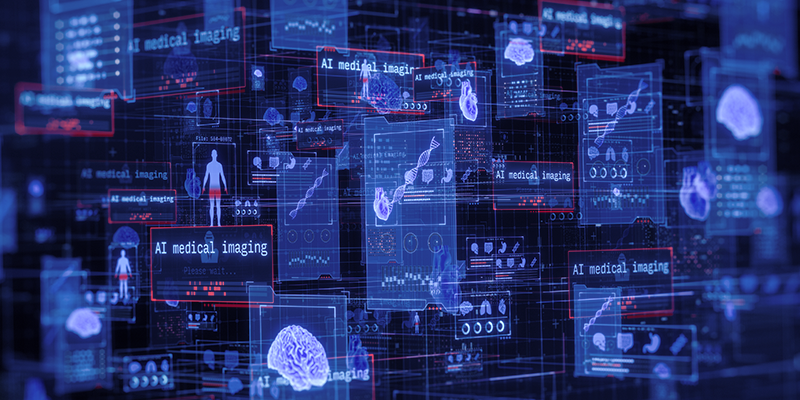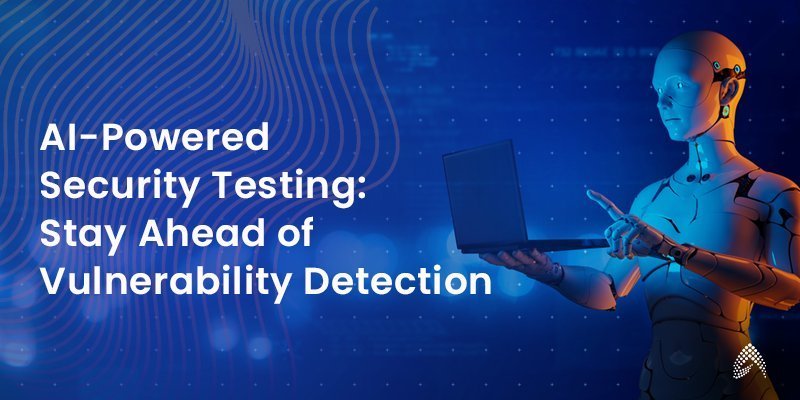Safeguarding Against AI-Powered Cyberattacks: AI As An Antidote

Introduction
As intruders and attackers become more intelligent by embracing AI technologies, CIOs are under immense pressure to confront AI-powered cyberattacks to protect their infrastructure and assets.
If you’re one among them, it’s time to reassess and strengthen your cybersecurity strategies to ensure the organization’s security and trust.
But why?
Sticking to traditional security methods in today’s rapidly evolving cyber threat environment is like bringing a sword to a gunfight. You will definitely run into a risk of losing the battle. Isn’t it?
Then, who is the savior?
Consider AI technology, a security guard who can see into the future, identifying threats even before they occur. AI for CIOs emerged as a reliable technology and approach, enhancing security and productivity.
The Rise of AI-Powered Cyberattacks
AI technologies have rapidly evolved, empowering cybercriminals with new tools and capabilities. These new capabilities allow cybercriminals to leverage AI algorithms to automate their attacks, evade detection, and exploit vulnerabilities at scale.
AI-powered cyberattacks typically use machine learning algorithms to analyze vast amounts of data about potential targets. By identifying patterns and vulnerabilities, these systems can predict which strategies will most effectively breach a particular organization’s defenses.
For example, Email phishing is one of the common applications in cyberattacks. Attackers analyze data collected from social networks and your company website and automatically generate messages to mimic your employees to deceive recipients.
The cost of each cyberattack reaches $4 million. Therefore, organizations must take necessary actions to combat AI-powered breaches and cyberattacks.
United Health Group’s Cyberattack Scenario:
- UnitedHealth Group has paid out more than $3.3 billion to providers affected by the cyberattack on its subsidiary Change Healthcare.
- The company disclosed in February that a cyber threat actor breached part of the unit’s information technology network.
The interruptions left many healthcare providers temporarily unable to fill medications or get reimbursed for their services by insurers, which ground revenue cycles to a halt. [1]
Implications and Challenges of AI-Powered Attacks:
AI in cyberattacks can have significant implications for organizations, as data breaches can compromise sensitive information, leading to financial losses and reputational damage. AI-powered attacks can target multiple vulnerabilities simultaneously, making them more sophisticated and dangerous than traditional cyberattacks.
These attacks can further affect your organization’s operational integrity and trustworthiness, as they can cause disruptions to critical systems, resulting in downtime and loss of productivity.
1. Enhanced Efficacy of Attacks: AI allows cybercriminals to target specific vulnerabilities more precisely. For instance, AI can analyze vast datasets to identify the weakest points in a security system, making attacks more likely to succeed.
2. Increased Speed and Scale: AI systems can quickly analyze data from multiple sources and execute attacks in real-time, overwhelming traditional defense mechanisms. With its automated learning capabilities, AI-powered cyberattacks can scale more rapidly than conventional methods.
3. Sophistication of Phishing Attacks: AI algorithms can craft personalized emails or messages that mimic legitimate sources with high accuracy, based on data collected from social media and other public platforms.
4.Automation of Attack Adaptation: AI-driven malware or attack programs can adapt to the environment after deployment without human intervention. This adaptability makes AI-driven attacks particularly dangerous and difficult to defend against.
5. Long-Term Damage to Trust and Reputation: Successful AI-powered attacks can lead to severe long-term damage to an organization’s reputation. If sensitive data is compromised, customers may lose trust in the organization’s ability to protect their personal information.
Understanding the Motives Behind AI-Powered Attacks:
Cybercriminals attack organizations to gain financial benefits, such as stealing valuable data or extorting money. In some cases, attackers may aim to gain access to sensitive information, such as intellectual property or personal records. Hence, organizations must implement robust cybersecurity measures to protect their sensitive data from such attacks.
How to Mitigate AI-Powered Cyber Risks:
AI itself is an antidote for AI-powered cyberattacks. Following are the best ways AI technologies can combat AI-powered cyberattacks.
A. Threat Detection and Response:
AI enhances threat detection by analyzing network behavior and identifying anomalies that could indicate a breach. By learning from data over time, AI can also automate the initial response, such as isolating affected systems or blocking suspicious IP addresses, speeding up containment, and minimizing damage.
Solution:
Machine learning algorithms are ideal for detecting anomalies in network behaviour that could signify a cyberattack. ML can also be programmed to execute specific security protocols when a potential threat is detected.
B. Predictive Security:
Beyond reactive measures, AI technologies can predict future attack trends based on historical data and current cyber event analysis. For instance, if an AI system notices increased traffic from a particular source that previously led to security breaches, it can alert administrators or automatically strengthen security controls in anticipation of another attack.
Solution:
Machine learning algorithms are ideal for detecting anomalies in network behaviour that could signify a cyberattack. ML can also be programmed to execute specific security protocols when a potential threat is detected.
C. Behavioral Analytics:
AI-driven behavioral analytics go beyond static security measures by dynamically analyzing user behavior to detect unusual activities. By continuously monitoring for deviations from the norm, AI systems can detect and respond to internal and external threats before they lead to serious security incidents.
Solution:
Deep Learning can analyze a user’s typical interaction with the system and detect deviations that may indicate malicious activities, such as data exfiltration attempts by an insider or compromised credentials being used by an external attacker.
D. Advanced Incident Forensics:
Following a security breach, AI can aid in forensics by automatically analyzing how the attackers breached the system, what data was accessed or stolen, and the attack trajectory. This rapid analysis helps organizations understand the breach’s impact and strengthens their defenses against similar attacks in the future.
Solution:
For forensics, NLP can sift through and analyze textual data from logs and reports to extract useful information quickly. ML algorithms can further analyze data patterns to reconstruct the timeline of a breach, understand the extent of the infiltration, and identify the methods used by attackers.
E. Enhancing Cybersecurity Training:
AI can simulate cyber-attacks in a controlled environment, providing realistic training scenarios for security teams. Additionally, AI can tailor training programs to address the specific weaknesses of an organization’s defenses, ensuring that training is as relevant and effective as possible.
Solution:
AI-driven simulation tools can create realistic cybersecurity scenarios for employee training, providing an immersive learning experience.
Microsoft Patches Critical Vulnerabilities in Azure Services:
On January 17, 2023, security researchers discovered four vulnerabilities in Microsoft Azure services that were susceptible to server-side request forgery (SSRF) attacks. These vulnerabilities affected Azure API Management, Azure Functions, Azure Machine Learning, and Azure Digital Twins.
Fortunately, Microsoft acted swiftly to patch these vulnerabilities, preventing attackers from potentially exploiting them. This incident underscores the importance of continuous security updates and highlights Microsoft’s commitment to protecting its cloud platform.
This serves as a reminder for organizations using Azure services to stay informed about security updates and patch their systems promptly to maintain a robust security posture.
Collaborative Efforts and Regulatory Frameworks for Enhanced Security:
As artificial intelligence (AI) continues to advance, experts predict that the sophistication and frequency of AI-powered cyberattacks will also increase. Organizations must remain alert and regularly update their security measures in response to new threats to stay protected.
In addition, regulatory frameworks need to keep pace with the ethical use of AI and establish guidelines for AI security. Considering these steps will help you ensure that AI technology is used safely and securely in our increasingly connected world.
Conclusion:
In summary, AI technologies not only match the capabilities employed by AI-powered cyberattacks but also provide advanced tools that can preempt, detect, and respond to threats more efficiently than traditional methods. As we look to the future, it is clear that continuous innovation in AI capabilities will be key to maintaining resilience against an ever-changing threat landscape.
This transformation is not merely about keeping pace with cybercriminals but preparing for a future where cyber threats are managed as swiftly as they emerge.

President & CEO – Growth Markets




